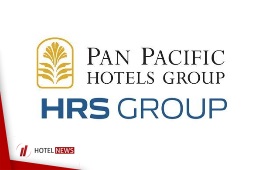
This enhanced partnership enables more seamless automated hotel processes, creating a win-win outcome for Pan Pacific Hotels Group and corporate clients worldwide. HRS announced an extension of its strategic partnership with Pan Pacific Hotels Group, one of Asia’s most established hospitality companies. Great news for global #businesstravelers: @HRS_NAM and @PanPacific Hotels announce new agreement, bringing process #automation and content distribution efficiencies that benefit multi-national corporate hotel programs. #hotels #travelprocurement The renewed focus of the partnership is to explore growing opportunities in corporate travel, both globally and regionally. Singapore-based Pan Pacific Hotels Group is growing its global footprint; the Group now has properties across 29 key markets in Asia-Pacific, Europe and North America. HRS works with more than 3,000 multi-national corporations on their managed hotel programs, including one-third of the Fortune 500. “Corporate travel managers are committed to offering their travelers quality hotels in the right locations, and at the right negotiated price. More corporate travel programs count on HRS to find these options around the world,” said Frédéric Dumoulin, Senior Vice President of HRS Asia Pacific. “Beyond those elements, hotels and corporations increasingly seek more automated, seamless processes that enhance distribution efficiencies. This ultimately helps make the traveler’s journey easier. Forward-thinking hotel management companies like Pan Pacific know that building win-win partnerships such as this are vital to staying competitive.” Ms. Cinn Tan, Chief Sales & Marketing Officer of Pan Pacific Hotels Group, said: “We operate in a fast-paced world where customer needs are constantly evolving, so keeping abreast of these are critical to our business. HRS and Pan Pacific Hotels Group share a common mission of putting customers first. This partnership reinforces our ongoing goal to streamline vital processes to everyday hotel program management. We look forward to leveraging new automated technologies to better serve our mutual clients in 2020 and beyond.” Pan Pacific Hotels Group currently manages nearly 50 properties across numerous key cities including Singapore, Beijing, Sydney and London. Business travel spending in Asia Pacific totaled $615.4 billion in 2018, and is projected to grow by 5.8 percent annually through 2023 as per Global Business Travel Association estimates.
Create: Dec 4, 2019 Edit: Dec 4, 2019 International News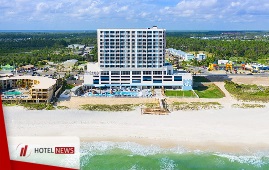
Innisfree Hotels has broken ground on its latest development project, a dual-branded SpringHill Suites and Courtyard by Marriott hotel located at 2900 Atlantic Avenue in Amelia Island, Fla. The hotel company will partner with Main Beach Sojourn LLLP, carrying on a 26-year affiliation of principals associated with the former Amelia Island Care Center located on the site. The all-new hotel boasts 239 rooms including suites, a resort-style pool deck with in-pool seating, a courtyard with fire pit area and poolside bar, a fitness room, 6,086 sq. ft. of meeting space and a location within walking distance of the Atlantic Ocean. “We’ve had the privilege of being part of the Amelia Island community for the past three years,” says Ted Ent, CEO of Innisfree Hotels. “The growth and development happening on Fernandina Beach and Amelia Island as a whole is exciting, and we’re looking forward to being able to welcome even more guests to the Atlantic Coast.” This is the second Marriott property in the Innisfree Hotels portfolio, and Ent and his team are partial to the brand. “They have an outstanding reservation system, unparalleled customer loyalty program and a robust marketing strategy that spans the entire globe,” he says. “It gives us confidence knowing we will be offering a top-notch, quality product to our guests.” Innisfree Hotels was recently ranked by Hotel Business, the top source for hotel industry information according to Harvey Research, as the 40th largest hotel owner and developer in the United States. “Our recent ranking at No. 40 is a direct result of our team’s dedication to a sustainable beach-oriented development strategy, our partners and our commitment to providing fun, memorable experiences to our guests,” Ent says. The hotel is slated to open in the spring of 2021.
Create: Dec 4, 2019 Edit: Dec 4, 2019 International News
TOKYO–December 2, 2019–Okura Nikko Hotel Management Co., Ltd., a subsidiary of Hotel Okura Co., Ltd., and Grand Tower Enterprise Co., Ltd. have signed an agreement covering the operation of one of Grand Tower Enterprise’s hotels. Currently operating as “Hotel Verve Bangkok”, the property will be rebranded as “Hotel JAL City Bangkok” and reopened as an Okura Nikko Hotel Management property from 2nd quarter of 2020. The agreement was signed on November 15, 2019. Hotel JAL City Bangkok is situated adjacent to Hotel Nikko Bangkok, which was opened in January this year. Thonglor BTS Skytrain station is just a three minute walk away. Thonglor is an area extending north and south around Sukhumvit Soi 55, commonly known as Thonglor Road, in the Wattana District of central Bangkok, an area which has long been home to many Japanese and other expatriates as well as wealthy Thais. The Bangkok International Trade & Exhibition Centre and Queen Sirikit National Convention Center, as well as multinational restaurants, bars, community-type malls and international hospitals are all nearby, making it a prime location for both business and leisure. Marcel P. van Aelst, CEO, Okura Nikko Hotel Management Co., Ltd., commented, “We are delighted to be able to introduce the Hotel JAL City brand outside Japan for the first time, and are hoping it will help bring broader recognition of the Okura Nikko Hotel brand in Thailand. We aim to provide services that take advantage of the convenient location of the new hotel, which is situated adjacent to Hotel Nikko Bangkok.” The hotel will offer 324 guest rooms with a standard area of about 26 square meters. In-room TVs will offer nine Japanese TV channels, including commercial channels. All bathrooms will be equipped with bathtubs, creating a chic and relaxing atmosphere. Spacious rooms, with an area of 56 square meters, will offer bathrooms with a separate shower booth as well as a separate toilet. It’s suitable for long-term stay. An all-day dining on the second floor will offer breakfast from 5 a.m. for the convenience of guests departing early. Two meeting rooms will be available. Guests staying at the hotel will additionally be able to use the swimming pool at the adjacent Hotel Nikko Bangkok. The hotel will be the first overseas property operating under the Hotel JAL City brand, and the fourth property in Thailand to be operated by Okura Nikko Hotel Management, following The Okura Prestige Bangkok (2012), Hotel Nikko Bangkok (2019), and Hotel Nikko Amata City Chonburi (scheduled to open in 2021).
Create: Dec 3, 2019 Edit: Dec 3, 2019 International News
The thinking and analyses of benchmarking continues to dominate hotelier discussion, and the industry’s most nimble minds are not satisfied the terminology, emphasis and focus have reached any type of apex. MANCHESTER, England—Hoteliers are in no doubt benchmarking has been one of the major, if not the most major, catalysts of the last decade helping fuel hotel performance, and the data is only getting better and more involved, according to sources. Now hoteliers are considering how benchmarking might change as the industry reaches what many consider the end of a cycle. Speakers on a panel at the recent Annual Hotel Conference titled “Sitting on the bench or pressing it” indicated one goal is the analyses of rooms benchmarking, not just around the primary sale, but all the way through the profit and loss account. That changes depending on the operating business model, sources said. “At the core is the transparency of data, and doing something with it. It is output rather than the input,” said Jonathan Walker, managing director of the 40-room No. 15 Great Pulteney in Bath, England, and a former director of hotel performance and operations support, Europe, at InterContinental Hotels Group. “It is not cash from benchmarking, but the cash you are missing if you do not have it, and the ability to articulate that to stakeholders,” said Kym Kapadia, chief commercial officer at Aprirose Real Estate Investment, which in 2017 bought from Bain Capital the 26-asset QHotel portfolio for £525 million (at the time equivalent to $706 million). “We’re seeing a shift in relevance of the historic data. It is now about looking ahead, monitoring pick-up and pace and about the business on the books,” said Steven Cote, product manager at Forward STAR, a division of STR, the parent company of Hotel News Now. Nick Turner, managing director at Owners Management Group International, a hotel-management company in the lifestyle and boutique space, said even more importance has to be placed on getting the competitive set right. “Otherwise it is rubbish in and rubbish out. It has to be right on an asset-by-asset basis, and it starts with the right comp set,” Turner said. “No one understands the business better than the GM on the ground, and it takes analysis and experience and talking to people,” he added. Sources said hoteliers now are focused on analyses of revenue-generation indices, comparing individual revenue per available room with that of the comp set and seeing how that metric changes for individual hotels when the market changes. Kapadia said keeping on top of the numbers has changed enormously as the number and range of stakeholders have increased. “It can be subjective in terms of the numbers of layers of ownerships and their opinion, and you have to look at the unemotional numbers,” she said. She said hoteliers still need to understand what they are and where they want to go before they get deep into the arithmetic. “Learn from best in class and overtake them, and remember there always are a cycle and an exit,” Kapadia said. “It is so important to have feasibility on any acquisition and investment. Yes, the forward-looking data is huge for the cycle, business plan and exit. Who knows, but with some insight and rationality, you’ll have a good guess.” Hoteliers who are not part of large portfolios or multi-brand platforms still are being nimble in what data they want and how to get it. “You have to have a vision as to where the product will be pitched,” Walker said. “We do a lot of research on product we might not know. We look at location, style, size, the obvious things, but also a few extra things … the quality side, being aware and curious as to what else is happening in your market.” Unlocking potential Hoteliers need to keep up to date, as third parties certainly are doing so, Walker said. “Last year, we were looking to open a hotel in Bristol, and we had a really awkward two-hour meeting, as (the other party) knew far more than we did. Benchmarking has to be ingrained, as a deal will only be passed to the bank if all the steps are passed,” he said. Cote said third-party collaboration of data and aggregating portfolios against one can provide more comfortability. One problem with performance data is the obsession with RevPAR. “All is more advanced in the rooms product. There is a need to be more clever in the rest of the building,” Aprirose’s Kapadia said. Cote said taking meaningful information from net RevPAR, with distribution costs subtracted from rooms revenue, is difficult in a country such as the United Kingdom, where “about 70% of revenue comes in from rooms … and there is no definite statement as to what net RevPAR is.” The meaning of net RevPAR also needs standardization, Cote said. “You have to have a benchmark, which is why it is currently more blurry due to the variation of definitions. Someone has to take a stance. After all, someone must have come up with RevPAR? I do not know who or when that happened?” Kapadia said. Turner added the industry has to continue to be supportive of the data and the terminology of it, and that thinking has to be adopted by universities and hotel schools. Walker said he does not believe the franchise model will change quickly because it remains very focused on RevPAR. Paralysis Sources also said there is a danger of “analysis paralysis” due to there being perhaps too many tools to look at. “Who is to say we should at any time be happy with our current state? And then how do we turn it into an actionable strategy, especially when you have multiple stakeholders to talk to?” Kapadia added. Owners Management Group International’s Turner, who also manages the Laura Ashley hotel and tearoom brand, said metrics on leisure clubs—membership rates, attrition, cost of acquisitions—and F&B remain in their infancy, if they exist at all. He added one shortcoming is that this operational excellence often comes at the expense of creativity and communicating with customers. “A broad view is necessary, on consumer data not historical,” Turner said. “I know what is good or not good for my business. It’s easy to look at the stats and the relevant costs, but it is not good enough only to look at the lowest costs. (One also must look at) the quality and what is right for the guest,” No. 15 Great Pulteney’s Walker said.
Create: Dec 3, 2019 Edit: Dec 3, 2019 International News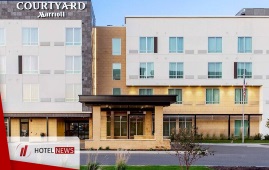
Vancouver-based REIT American Hotel Income Properties completed its sale of 45 economy assets and agreed to purchase 12 premium-branded ones. The move aligns the company’s structure closer to U.S. REITs and better presents itself to investors, executives said. VANCOUVER, British Columbia—Canadian real estate investment fund American Hotel Income Properties on 28 November agreed to acquire a portfolio of 12 premium-branded hotels in the U.S. for $191 million. The move sees the Vancouver-based AHIP move further up the segment ladder and concentrate on higher margins and yielding. With this announcement, the company also said it closed its previously announced sale of a 45-hotel economy portfolio to an affiliate of Vukota Capital Management for total gross proceeds of $215.5 million. The latest deal caps off a period of restructuring for AHIP. In April 2018, the company transferred management of all of its portfolio, at the time 115 hotels, to Texas-based Aimbridge Hospitality, as part of its strategy to become a pure owner. Then in July 2019, AHIP agreed to the deal with VCM. The VCM deal, which closed on 28 November, saw AHIP exit the economy segment and funded its latest acquisition, which comprises 12 hotels and 1,203 rooms in the U.S., in Michigan, Minnesota, North Dakota, Pennsylvania and Texas. The largest hotel by room count is the 120-room Courtyard St. Paul Woodbury in Minneapolis. Seven assets are managed by Marriott International, four by Hilton and one by InterContinental Hotels & Resorts. Aimbridge merged with Interstate Hotels & Resorts on 25 October, although between the AHIP-Aimbridge deal and the Aimbridge-Interstate merger, AHIP renegotiated its management-fee structure with Aimbridge. In an investor update released in coordination with the agreed-to buy and completed sale, AHIP said the new management-fee structure will “strengthen (its) margins, cash flow and growth potential over the next several years.” Expected to close by the end of the month, the 12-hotel buy now gives AHIP 79 assets and 8,887 rooms in its premium-brand portfolio. Jamie Kokoska, AHIP’s director of investor relations, said the completion of the sale of its 45 economy hotels alongside its new acquisition has transformed AHIP into a “pure-play” premium-branded hotel company. The 12 hotels have been acquired at an “approximate 8% capitalization rate” and, with all built in the last five years, at below replacement cost, she said. “By selling our economy-lodging portfolio, our business has become more streamlined and efficient and allows us to focus solely on driving growth from our growing portfolio of premium-branded hotels,” Kokoska said. “We believe these transactions will also better align our company with other publicly traded U.S. hotel REITs and hopefully make our business more easy to understand for investors. Ultimately, we hope our trading multiples will more similarly reflect those of the broader hotel REIT sector,” she said. Segment shift AHIP CEO John O’Neill said in the news release announcing the deal that the “mostly all-suite” deal is the final chapter that completes “a significant component of our 2019 capital recycling program.” Kokoska said Aimbridge will likewise manage the new portfolio. Troy MacLean, equity research analyst at Toronto-based BMO Capital Markets, agreed the deal moves AHIP farther up the segment scale. “The sale and new purchase is less about a price-point strategy than about becoming more of a pure play. They like select-service hotels,” MacLean said. The hotel stock, both the bought and the sold assets, also is different in market and format, MacLean said, with the latest deal being likely an economically safer platform and one providing higher margins. “The rail hotels were in tertiary markets with basically one buyer. When the rail business declined, they really suffered,” MacLean said, referring to the assets in the VCM deal and their associated rail crew-lodging contracts that were also transferred. Kokoska said the new buy, due to close by the end of the year, continues AHIP’s strategic decision to focus on higher-quality, select-service premium-branded hotels that inherently have higher average daily rates. The focus will remain primarily on the upper midscale to upper-upscale chain scales, mostly with brands offering suites or extended-stay accommodations located mostly in metropolitan secondary markets outside of the Top 25 in the U.S. “Another target is to be in markets near multiple demand generators such as hospitals, universities, business parks and stadiums. We believe these kinds of hotels have the ability to provide strong, sustainable returns, while also being defensive in changing market conditions,” Kokoska said. “These kinds of hotels do often generate higher margins due to less frequent guestroom turnover and lower operating expenses,” she said. As of 27 November, AHIP’s market capitalization stood at $505 million Canadian dollars ($380.2 million), according to the investor update. That update also showed the revenue-per-available-room rise across AHIP’s portfolio, even with inflation being taken into account, with that metric in 2013, when its assets were all in the economy segment, being $46.15; in September of this year, excluding the 45-asset economy-segment sale, being $76.80, and for just the 12 agreed-to hotels—although the rest of the portfolio is not included in the calculation—$97. The average room count also has increased in the last six years from 80 to 115, with the 12 new hotels averaging 100 rooms. Despite being listed on the Toronto Stock Exchange, Kokoska said AHIP still has no immediate plans to open its wallet for Canadian assets.
Create: Dec 3, 2019 Edit: Dec 3, 2019 International News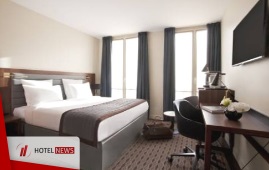
Located in the prestigious 8th arrondissement in Paris, the brand new and fully non smoking Best Western Premier Kapital Opéra boutique-hotel is a new destination for business or leisure travellers. Best Western Premier Kapital Opéra, close to the Village des Batignolles and only a few minutes on foot from the Gare Saint Lazare railway station, is designed by Marcelo Joulia and have 54 rooms including 2 junior suites. The staff speaks english, french and spanish. Services and facilities includes WiFi, air-conditioning, 24/7 reception desk and business corner, concierge and laundry service.
Create: Dec 1, 2019 Edit: Dec 1, 2019 International News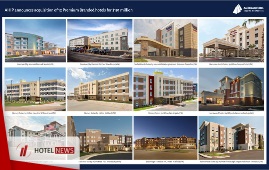
American Hotel Income Properties REIT LP (TSX: HOT.UN, TSX: HOT.U, TSX: HOT.DB.U) announced that it has reached a definitive agreement to acquire a portfolio of 12 well-maintained Premium Branded hotels for $191.0 million excluding closing and post-closing adjustments. The 12 hotels, totaling 1,203 guestrooms, are located across the United States and will significantly strengthen AHIP's geographic presence in Texas and the Midwest. The properties have all been constructed within the past five years, are stabilized and have minimal brand mandated property improvement plans. The transaction is expected to close during December 2019, at which point AHIP's portfolio will consist of 79 Premium Branded hotels, representing 8,887 total guestrooms, that are licensed primarily with Marriott, Hilton and IHG. "We're very excited to complete a significant component of our 2019 capital recycling program by adding these 12 high-quality, mostly all-suite focused, recently built select-service hotels to our portfolio of Premium Branded hotels," said John O'Neill, CEO. "We're especially pleased with the acquisition cap rate and short closing timeline for this transaction, as the cash flow from these newer hotels will minimize the dilution from the sale of the Economy Lodging portfolio. With no major capital renovations required, the hotels in this portfolio should perform without any income displacement. In addition, the improved debt financing terms we've secured for this transaction, including interest only payments at lower fixed interest rates, will meaningfully reduce our financing costs and drive higher cash flows. We continue to believe higher-quality properties and attractive financing terms will drive better risk-adjusted FFO accretion and create value for our unitholders over the long term." AHIP intends to use net proceeds from the sale of its Economy Lodging portfolio, alongside an approximately $105 million new fixed-rate term loan to finance the Acquisition. Specifically, the facility will have a five-year term with fixed interest rates less than 4%, secured by the 12 new hotel properties. Exact debt terms will be confirmed at the time the Acquisition closes. The hotels are being acquired for approximately $158,800 per key, which is below AHIP's estimate of replacement cost. The 12 hotels in the Acquisition include six Marriott branded properties (two Courtyards, two Residence Inns, one Fairfield Inn & Suites and one TownePlace property), five Hilton branded properties (three Home2 Suites, one Hampton Inn and one Homewood Suites), and one IHG branded property (a Staybridge Suites). Eight of the twelve hotels are all-suite products and all of these brands are complementary to AHIP's existing hotel portfolio of select-service, premium branded, upper-midscale to upper-upscale properties. Importantly, all of the properties are already managed by Aimbridge Hospitality – AHIP's exclusive hotel manager, which should ensure a seamless transition into AHIP's portfolio. The Acquisition also further diversifies AHIP's geographic markets, strengthening the Company's presence in markets outside of the U.S. East Coast. Six of the new hotels are located in Texas, while the remainder are located in the Midwest (Michigan, Minnesota, North Dakota and Pennsylvania). In line with AHIP's long-term strategy, all 12 hotels are located in metropolitan secondary markets that benefit from multiple demand generators and industries to support the local economies.
Create: Dec 1, 2019 Edit: Dec 1, 2019 International News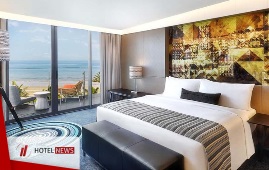
Oman Tourism Development Company (OMRAN), the Sultanate’s executive arm for tourism development has signed a term financing agreement with the Oman Arab Bank (OAB). Under the agreement, OAB will finance OMRAN with a long-term debt for the W Muscat. Commenting on the new agreement, OMRAN’s CEO Peter Walichnowski said: “Now that the W Hotel has completed construction and officially opened, we can put in place long term debt that will be financed from hotel operations. The involvement of the private sector allows Government funds to be released and used to create new tourism projects that support the 2040 National Tourism Strategy.”This agreement is in line with the objective of supporting the Government’s economic diversification efforts and increased focus on developing the country’s tourism sector, while establishing strong synergies and partnerships to aid the Sultanate’s economic agenda. OAB’s CEO Rashad Al Musafir said: “OAB recognises Oman’s potential for growth, especially with regards to tourism, and the need to further diversify the country’s economy. Subsequently, we are committed to supporting the various arms of the government in facilitating their various developments, in turn assisting them in any way possible towards achieving Oman’s 2040 National Tourism Strategy goals. This is why we are delighted to be collaborating with OMRAN, a company that has a proven track record of delivering and managing sustainable tourism assets such as the W Muscat.”
Create: Dec 1, 2019 Edit: Dec 1, 2019 International News
The voodoo priest and all his powders were as nothing compared to espresso, cappuccino, and mocha, which are stronger than all the religions of the world combined, and perhaps stronger than the human soul itself. Mark Helprin Rich and powerful, espresso is a nitro-boost to your day and a go-to for coffee drinkers looking for a way to get through those long hard days and nights. It is a refinement of coffee, distilled down to its most potent elements and delivered in special cups that should have a warning label that reads “High Vibration and Caffeine Jitters Ahead”. Espresso day celebrates the history of this delicious and powerful solution to an otherwise dreary day. History Of Espresso Day In Turin, in 1884 an incredible new innovation was developed that would change the way work would be done for all of history. No more would tired laborers have to rely on pure willpower to get them through the day or lean on the watered-down attempt at caffeination that was normal coffee and tea. Instead, thanks to the innovative methods of Angelo Moriondo coffee had seen a new age of enlightenment, as his new machine found a way to separately control the passing of steam and water through the coffee. This innovation made it possible to extract the fullest possible potential from the humble coffee bean. Espresso Day was created to honor this invention and the wonderful man who made it all possible. True, the machine has undergone multiple upgrades and innovations since then, with homemade espresso machines now being available, and the latte is now one of the most popular methods of imbibing this drink. From Turin, Italy this beverage spread throughout the world, earning a place of prominence in Europe, the USA, and eventually the world at large. How To Celebrate Espresso Day Celebrating Espresso Day is as simple as skipping on down to your local caffenation station, be it a Starbucks, Tim Horton’s, or whatever your local flavor of coffee shop is. Order yourself the strongest drink on the menu, a triple-shot espresso if they have them, and raise a small ceramic glass of high-powered octane the those in attendance. Toast Angelo Moriondo and his works, and let all who will listen know that it is he who drives the modern worker and increases production. Then stop on the way home and buy yourself your own personal espresso machine, because weekends need coffee too.
Create: Nov 23, 2019 Edit: Nov 23, 2019 Coffee Shop
